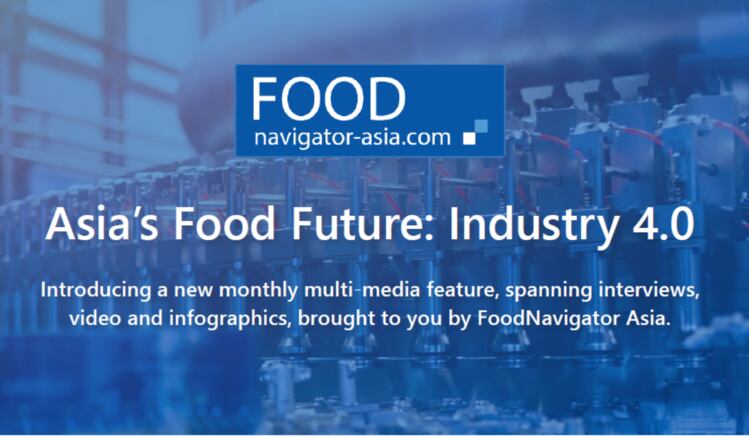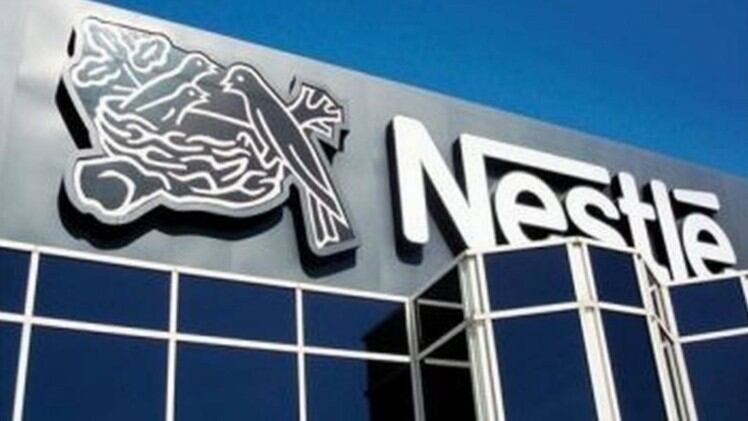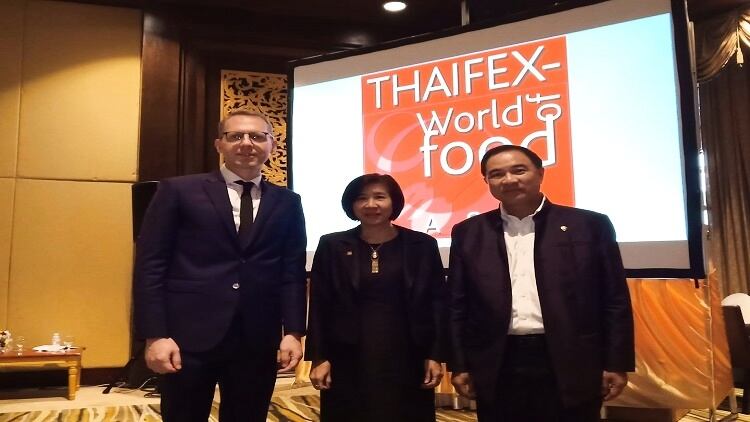The Asia Pacific region can be considered one of the world leaders in smart and connected packaging technologies, particularly with regard to the use of QR codes.
According to data from research agency Mintel, an 83% increase in the use of on-pack QR codes has been observed in the region between 2014 and 2018, with some 9% of all packaged good launches having a code attached.
“In the Asia Pacific region, Korea and Japan, and even more so, China, have adopted QR codes as a means of using packaging to bridge the information gap between the physical and digital worlds,” David Luttenberger, Mintel Global Packaging Director told FoodNavigator-Asia.
There are a good number of companies working on QR code-related technology within the region, and one example is smart packaging company ScanTrust.
“QR codes are the closest thing to a ‘universally accepted’ technology for engaging with consumers via smart packaging,” Katrina Too, ScanTrust Global Head of Marketing told FoodNavigator-Asia.
“While not every consumer regularly scans a QR code, everyone recognizes what it is and what they can do with it. This general awareness [is] a major advantage compared to other potential solutions to communicate to end-consumers via smart packaging.”
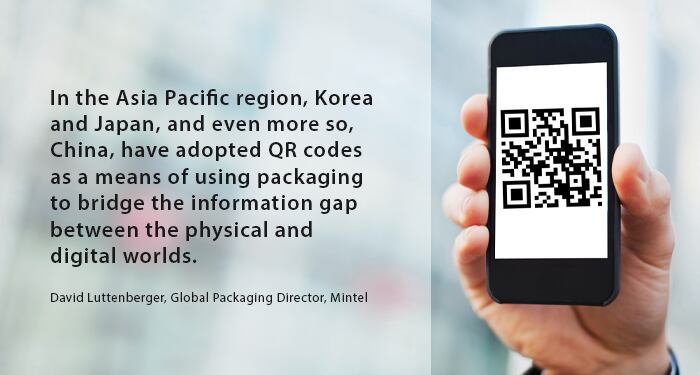
ScanTrust partnered Shanghai-based coffee firm Cambio Coffee to build in a blockchain-enabled traceability functions for its product and existing mobile application, which it did using a copy-proof QR code.
Data including the date of entry, harvest date, the origin of coffee, roast date and more are entered by the firm and its delivery partner onto the blockchain platform, which consumers can access by scanning the QR code on their mobile devices.
Too added that QR codes also offer benefits in terms of flexibility and cost, making it one of the best smart packaging solutions available.
“[In terms of] product lifecycle management, upstream information on the origin of a product and its ingredients can be assigned to each QR, allowing any consumer with a smartphone to the same code and instantly access all of this,” she said.
This sort of information is key in today’s F&B landscape, where transparency is becoming increasingly important to gain consumer trust. According to Cambio Coffee CEO Sebastian Martin: “[This] technology gives us a way to validate our [origin story] claims.”
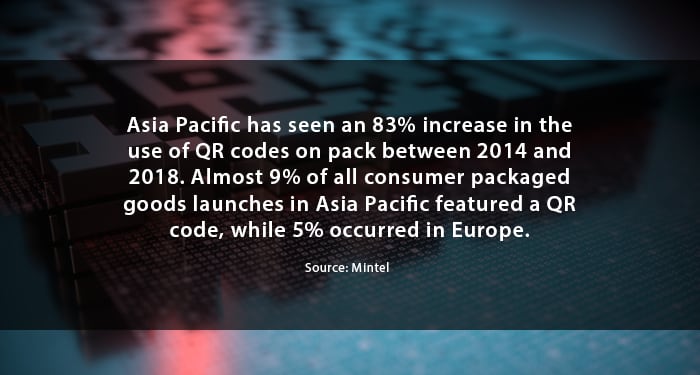
In terms of implementation costs, Too described this as ‘negligible’ for manufaturers.
“[This is because the technology] can be integrated into existing production workflows for products and product packaging,” she explained.
“[There may be other exciting] technologies out there], but many come with a much higher material or implementation costs which proves to be too expensive for most F&B product lines.”
New Zealand dairy co-op Fonterra also uses QR codes as well as a global electronic traceabiity system as part of its product authentication system to track its Anmum paediatric range in some markets.
“Anmum products carries a QR code on the packaging, located at the base of the tin, to allow consumers to validate the authenticity of their products at point of purchase. It also provides information on the origin and provenance of the product,” Fonterra Group General Manager for Food Safety and Quality Tim Kirk told us.
“The global electronic traceability system also allows Fonterra to see the entire history of any product across the value chain from on farm collection to when it reaches the customer.”
Anmum is the first Fonterra product that has implemented this system, and has only been used in China and New Zealand so far.
NFC technology
Apart from QR codes, technologies such as Near-Field Communication (NFC) have also shown great potential in the smart packaging area.
The global NFC application market is expected to hit some US$24bn by 2020, and companies like Hong Kong-based are looking to cash in.
NFC is a form of technology that enables communication at short ranges between compatible devices, between a minimum of one transmitter device and another signal-receiving one.
“Many companies in the F&B industry today know that it is no longer just enough to just sell a product – they need to provide the entire lifestyle [experience],” Stephen Fung, NFC Touch Sales and Marketing Manager told us.
“Previously, brands attempted to do this via packaging design, but now with the emergence of technology, [this is a way] to provide more value.
“Many brands are struggling to tie in the Internet of Things with the actual products, and F&B products in particular are unlikely to have power sources (like batteries) to enable this – this is where NFC comes in.
“[All that is needed] is the inclusion of an NFC chip into the food product packaging – the consumer can then just tap their phone and obtain further [information] and value.”
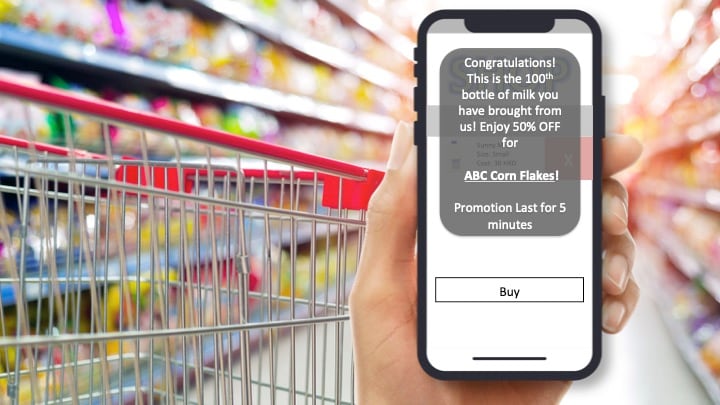
As compared to QR codes, Fung said that NFC technology has an advantage in terms of being able to conduct product verification in addition to product identification, and is information contained here is much less easier to copy too.
“With NFC, every single chip is unique, which provides that verification capability,” he added.
Watch the video below to find out more about the use of NFC technology.
RFID technology and smart chip labels - Cost cutting and time saving
A smart chip label about the size of a thumb is helping retailers cut manpower needed at the cashier counter and time needed for consumers to purchase their items.
Developed by Beijing-based tech firm ZWZTECH, the smart chip, which comes in the form of a white sticker, could be pasted on the outer packaging of food and beverage items.
The smart chip acts as the ID of the item it is pasted onto. It contains all product information, such as the date of expiry. RFID technology is used to read the signal emitted from the smart chip label.
With the smart chip label and the smart cashier machine – also developed by the firm – consumers can purchase the products without the help of cashiers at all.
In addition, they do not need to scan each item individually either.
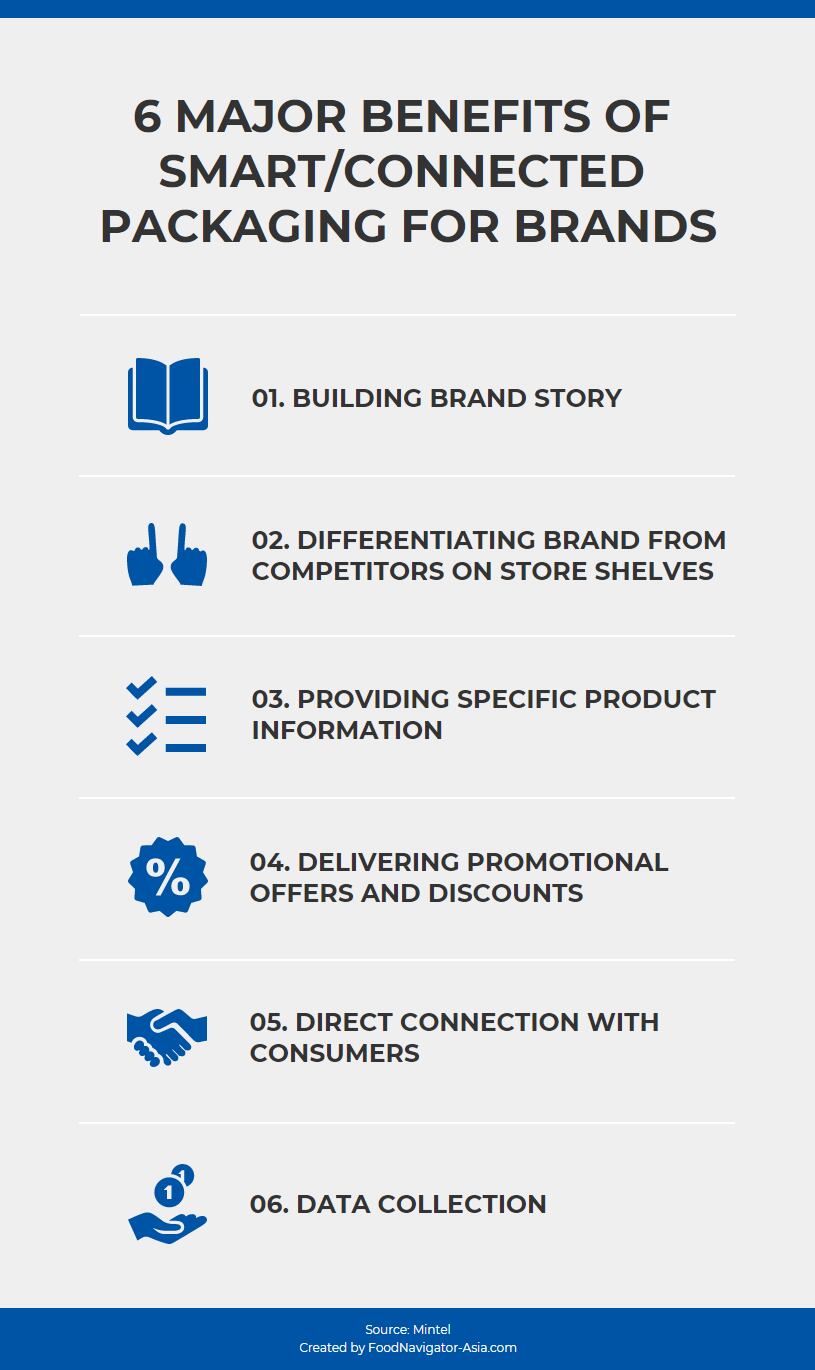
“The usual barcode requires consumers to scan each individual item during purchase. But with this smart chip label and using our machine, consumers can put a lot of products, 10 or 20 items on the reader at one go,” COO of ZWZTECH, Li Guo, told FoodNavigator-Asia.
The firm showcased its technology in a Hello Foods Market featured at the Food and Beverage Innovation Forum (FBIF 2019).
The firm spent less than two years to develop the technology and there are about 10 to 20 convenience chain stores using its technology currently.
An example is the MOMA convenience chain stores managed by Beijing’s property firm Modern Land.
“There are many (commercial partners that we can work with) because the range of our product use is pretty wide. Starting from the smart chip labels, we can work with product brands on their manufacturing lines. When the products are out, we can paste the (smart chip label with the) unique identifier (UID) on it.
“Some of the firms that we partner with are retailers, such as the premium convenience stores,” Guo said.
Moving forward, the firm would work towards increasing the operation efficiency of retail stores by at least 50% and cut manpower cost by 20% to 30%.
Watch Guo explain and demonstrate the workings of the smart chip label.
The hidden dangers
Although smart packaging can provide multiple efficient methods of both connecting with consumers as well as for traceability, food firms who opt to take up any of these technologies need to remain vigilant.
Earlier this year, Nestle Products Sdn Bhd (a Nestle Malaysia subsidiary) was issued a written summons over the alleged ‘unauthorised and/or unlawful’ use of a QR code by technology company MadLabs, which is suing for the sum of RM139mn (US$34mn).
This was in addition to a request for an order/injunction for the company to ‘immediately cease and desist’ from further use of the QR code, and the assessment of other damages and costs.
In addition, a QR code owned by Mad Labs and printed on several of Nestle’s Maggi products were found to link to malicious or offensive website instead of to the official Maggi website in December last year.
Nestle Malaysia lodged a complaint about the incident to the Malaysian Communications and Multimedia Commission (MCMC), leading to the shutting down of Mad Labs’ domain.
Although Nestle Malaysia declined to comment further as the court case is still ongoing, this example can clearly serve to forewarn companies as to the importance of proceeding with and monitoring the use of such technology with caution.


